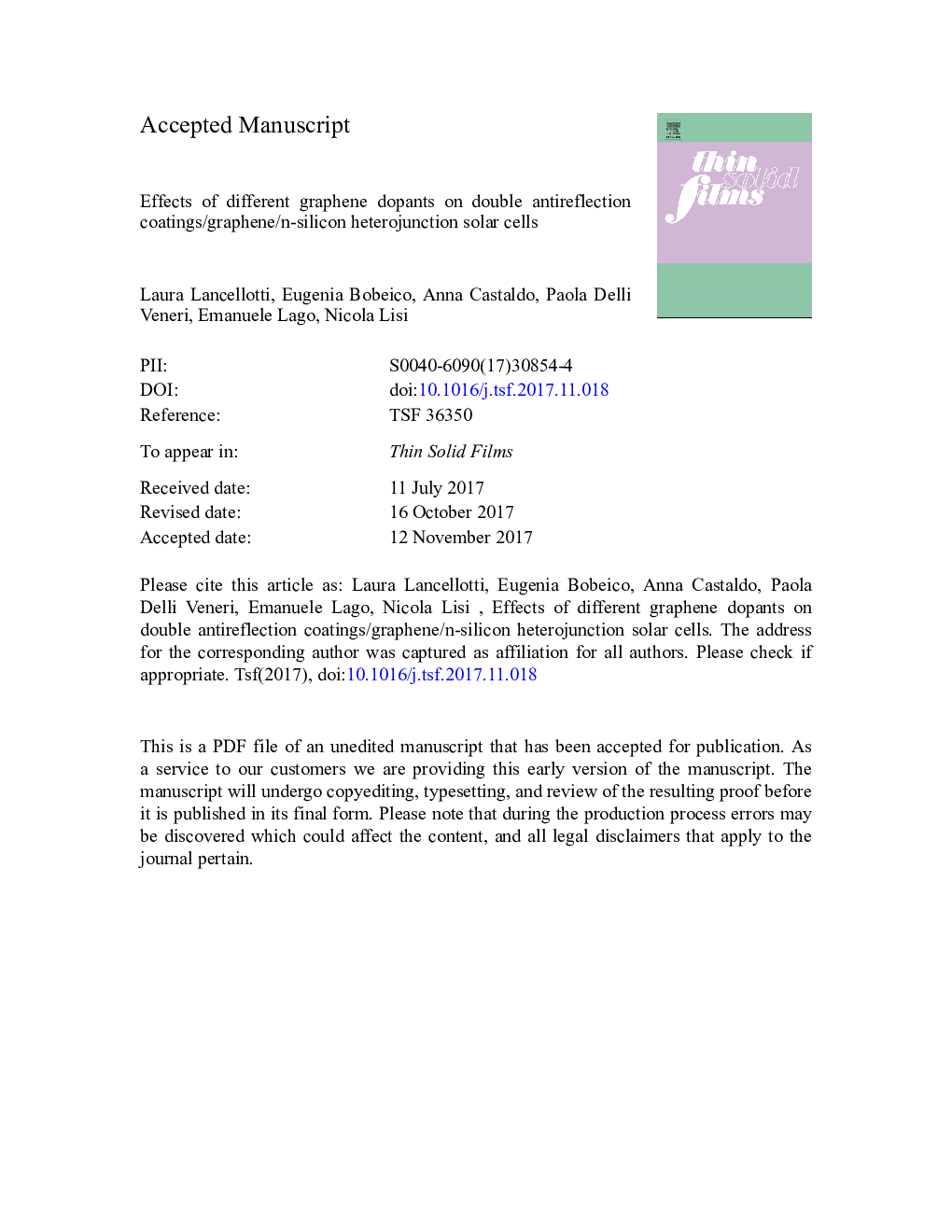| Article ID | Journal | Published Year | Pages | File Type |
|---|---|---|---|---|
| 8033098 | Thin Solid Films | 2018 | 26 Pages |
Abstract
In the present work we have tested the effects of two of the most used graphene chemical dopants, nitric acid (HNO3) and thionyl chloride (SOCl2), on multilayer graphene/n-silicon (G/n-Si) Schottky barrier solar cell completed with a double antireflection coating (DARC). The DARC has been realized with a MgF2/ZnS thermal deposition on graphene. In both cases the graphene doping process performed before DARC deposition increases the graphene conductivity and the work function, leading to cells with larger open circuit voltage and higher efficiency. After DARC layer realization a second acid exposure is necessary to compensate a partial de-doping effect and restore graphene doping. However the electrical characterization shows that the DARC/G/n-Si finite solar cell behaves differently with the two dopants. It is noteworthy that the presence of DARC does not prevent a further re-doping with HNO3, allowing the fabrication of cells with 8,5% efficiency which is not the case with SOCl2: this effect was explained by different chemical interactions between graphene, the deposited DARC and the two doping substances.
Related Topics
Physical Sciences and Engineering
Materials Science
Nanotechnology
Authors
Laura Lancellotti, Eugenia Bobeico, Anna Castaldo, Paola Delli Veneri, Emanuele Lago, Nicola Lisi,
